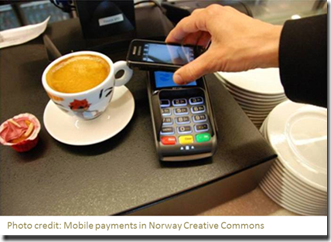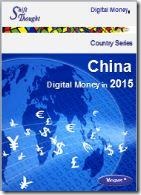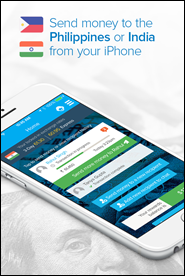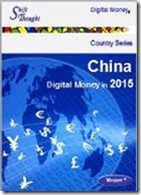As Fintech firms continue to make breakthroughs and disrupt banking and payments services around the world, I am delighted to share the perspective of someone at the forefront of innovation in Europe.
Cashcloud has received a number of awards for its’ innovative payments service, most recently winning the Fintech Innovation Awards 2015 held here in London. I was therefore delighted to have a chance to get their story from the man who is behind much of the success, Olaf Taupitz, Managing Director of Cashcloud SA.
Olaf, Congratulations on winning the Fintech Innovation Awards 2015. Could you please give us an introduction to your company and services?
I look after all the operational entities of the Cashcloud group of companies. We have our headquarters in Switzerland. Cashcloud SA in Luxembourg is the unit through which we manage the relationship with partners & customers. We have an important operations base in Germany and Romania which has agents for customer service. We also have near-shore development teams in Ukraine and Spain.
So although we have just 35 people on board, it is an international setup focused on European markets. My partner Sven Donhuysen was the Founder of the company in 2012. By the end of 2013 we launched in the first 4 European markets where we have over 100,000 customers and over 500,000 downloads of our app.
We are proud of the award you mention, that we recently won in London. This was the third award we received in 6 months with wins in Switzerland (Nov 2014), Germany (Dec 2014) before that. These have been encouragements for us to become better and better, and provide us motivation to tackle the host of issues we as a start-up face.
Could you tell us a bit about your products, services, markets and segments, and what is behind the recent awards you’ve received?
What was particularly appreciated is how easy it is to use our application and the fact that we combine a number of things, not just payments.
Our primary segment is the “native digital” youth market, who can transfer money easily between each other, make payments at POS through NFC stickers and earn cash credits in return for buying specific goods, sharing information or inviting friends. Coupons and cashback activities have been launched in Germany and Spain.
We allow customers to easily transfer money between friends through a simple message. They can pay at POS using NFC stickers and will shortly have cards with MasterCard acceptance around the world. And importantly, people can obtain offers and bonuses for using us through Cash Credits.
Why did you decide to get into mobile payments, and how did you select the countries you’ve picked (Germany, France, Spain and the Netherlands)?
Regarding the motivation to enter mobile payments, I have a background in Telecoms and Finance and was convinced that we could make a strong play through a Telecoms+Finance+Card offer, especially as the smartphone kept getting cheaper.
Through the mobile Cashcloud eWallet we aim to offer this: a means for people to pay online with no need to enter personal data, good control over their transactions and special incentives for using our service to make payments.
Which of the four European countries showed the most take-up of mobile payments?
So far for us Spain showed most adoption. With NFC stickers, there are more NFC acquiring terminals there. As you know, card usage itself is not as popular in Germany, which is a cash-driven market. Netherlands is not bad but we don’t promote so many activities there - it is a good test market for us.
So right now if I was to go on holiday from UK to Spain, could I use your service to pay in Euros?
We primarily issue the service to citizens of the countries in which we’ve launched.
However people could receive a secondary card or sticker up to the limit of 2,500 Euro a year, beyond which KYC requirements apply. People can use the MasterCard to pay everywhere in the world.
How easy has it been for you to expand to new countries in Europe? Any plans to go outside Europe?
We had to start with one currency first – Euro based and chose 3 big markets and one small. Later this year we hope to investigate launch in other Euro-based countries as well as in UK, Poland, Romania and Switzerland in their currencies.
Going outside Europe is not on our plans right now. In our future work, we look forward to enabling remittances as well, especially as we enter the UK market.
How does your business model work, and how have customers reacted to your Freemium/Premium pricing?
We’re not about making money from payments itself. With the new rulings across Europe we anticipated that transaction fees, interchange would drop, merchants want to pay less.
What we are able to do is to obtain aggregate knowledge on consumer trends and profile typical customer shopping behaviour. This is very important for the emerging campaign management and advertising models.
What key technology decisions did you have to make since 2012 and how have these contributed to your success?
Two key decisions we made from the start have proved right, and helped in our success. Firstly we decided that our service must be mobile and supported Android and iOS from the start. Secondly, from the start we focused on building a platform – an online API that would help us integrate and be a part of other ecosystems and use cases.
What is your view on the competition especially Apple? How would a startup service fare against such global competitors?
Actually we welcomed the Apple Pay launch as it supported the NFC solution. We are happy to see the success in the US. We anticipate it will take longer to launch in Europe, perhaps it could take another 12 months for the pieces to be put in place.
What’s been the most difficult challenge for you so far?
I’d say we found it easy from the issuing side, but it was the acquiring side that is harder for us to control. As the acceptance network rolls out across Europe we expect this to be resolved.
Secondly it has been a challenge to build strong drivers for adoption. This is the problem faced with mobile payments in developed countries where people already have good banking and card services. I think the role of the mobile phone as an authentication device is now being acknowledged and we expect better take up due to this.
What are your plans for 2015 and beyond?
We are hard at work on our plans for expansion. Apart from more countries across the Eurozone, we are investigating in market launches in the UK, Switzerland, Romania and Poland – so will have to support a number of new currencies.
It has been fascinating speaking to you Olaf. Thanks for sharing your story that I hope will be an inspiration for the many Fintech startups, across Europe and around the world. I wish you the very best of success in your plans!
 Olaf Taupitz is Head of Product and Innovation and a Member of Board at cashcloud.
Olaf Taupitz is Head of Product and Innovation and a Member of Board at cashcloud.
Olaf is in charge of managing all initiatives of the company and he oversees the development of cashcloud’s application and technical set up, including management of outsourced partnerships. He brings to his role key expertise from his experience at IPS International Prepay Solution AF, CALL4T, Tele2 and his other work at the intersection of Telecoms, Payments and Card services.
Charmaine Oak
Author of The Digital Money Game, co-author Virtual Currencies – From Secrecy to Safety
http://www.linkedin.com/in/charmaineoak
Join me on Twitter @ShiftThoughtDM and The Digital Money Group on LinkedIn








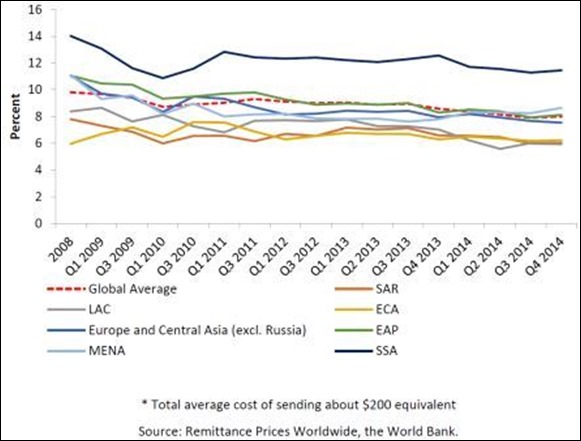



 Charmaine Oak is Author of
Charmaine Oak is Author of 


